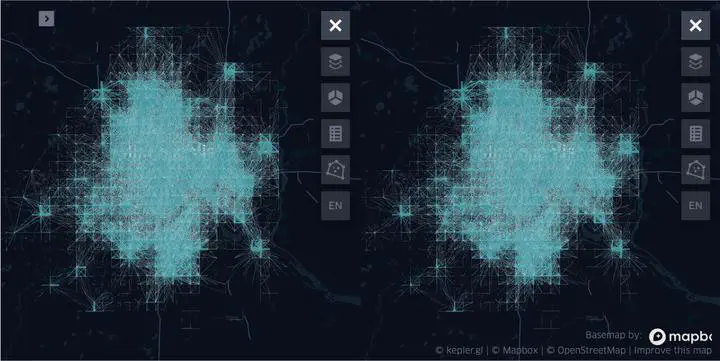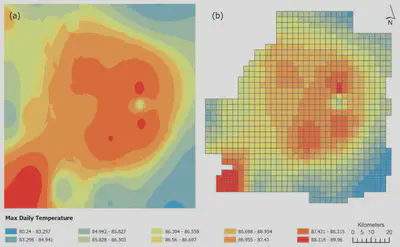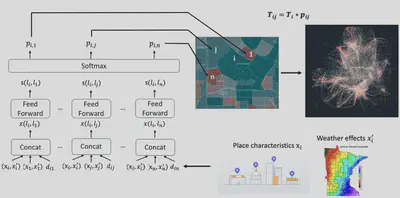Generating Mobility Flow Using Deep Gravity Learning Model

In this project, we developed a deep neural network model to predict human mobility flows between locations in cities. Understanding these flows is crucial for transportation planning and urban design.
We used a device-level mobile positioning dataset from PlaceIQ to create a ground truth mobility flow network at the 3-km grid level. We also incorporated external weather data on temperature and precipitation interpolated across our study area.

Our model architecture follows previous work, with multiple parallel neural network structures. For each origin-destination pair, we input place characteristics (e.g. land use, points of interest) and weather conditions. The output is a score representing the likelihood of a trip occurring.

We compare this deep learning approach to a gravity model, a standard method that decreases predicted flows with distance and increases them with population size.
The deep learning model outperformed gravity on Common Part of Commuters (CPC) and Pearson correlation coefficient(r). Incorporating weather data further improved the neural network’s performance. This shows both urban features and environmental factors influence human movement.
The codes and detailed documents can be retrieved via my GitHub Repo.